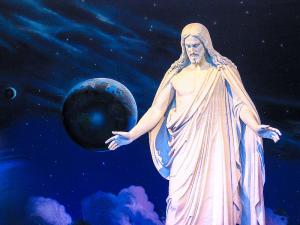A couple of weeks ago in Sunday School, a middle-aged woman shared her conversion story to Mormonism. Born and raised a Methodist, she noted that she always felt like something was lacking. When she discovered Mormonism, she explained, “it was like Methodism, only more.”
I smiled to myself as she said this, recognizing in her own conversion narrative a common refrain that dominates the autobiographical writings of her 19th century predecessors. Among the first generation of converts to Mormonism, roughly one-third of them came from Methodist backgrounds, including Emma Smith, Brigham Young, and John Taylor. Even Joseph Smith remembered being “somewhat partial to the Methodist sect” and feeling “some desire to be united with them” before his own visionary experience. He would later tell Methodist preacher Peter Cartwright, in words foreshadowing those of the woman in my Sunday School, that “We Latter-day Saints are Methodists, as far as they have gone, only we have advanced further.”[1] And Smith wasn’t alone in expressing such sentiments. Methodist converts to Mormonism routinely portrayed their former faith as an important stepping stone on their path to discovering Mormonism, a sort of Elias that prepared the way for the fulness of the truth.
Brigham Young thus spoke of Methodist founder John Wesley as “as good [a man] as ever walked on this earth” and suggested that “had the Priesthood been conferred upon him, he would have built up the kingdom of God in his day as it is now being built up.”[2] British convert Edward Tullidge agreed, going to far as to argue that “there are no people so much like John Wesley and his early followers in spirit, faith and missionary energy and almost every other distinctive feature, as the Mormons.”[3] While Methodist converts to Mormonism seem to have held their former faith in a higher regard than those who joined Joseph Smith’s Church of Christ from Baptist of Campbellite churches, similar examples can be found among converts from all faiths. Such declarations complicated the earliest Mormon notions of a “Great Apostasy,” or the notion that the world had fallen into sin and that the earthly church established by Christ and his apostles had ceased to exist. The relatively positive portrayals of other faiths thus served as a counterbalance to the swift denunciations of contemporary and historic Christianity alike in the writings of Parley Pratt and other early Mormon apologists and theologians.
As revealed in the comment in Sunday School, these two approaches to apostasy have persisted until today, with Mormons understanding their religion simultaneously as a restoration of pure Christianity completely and utterly lost between the time of Christ and the First Vision and as a culmination of scattered truths carried on in disparate movements within Christianity. Emphasis on one of the other has ebbed and flowed over the last 180 years, with external pressures and internal shifts alike affecting that process. Doctrinal developments of the 1840s, the isolation brought about by the exodus to Utah, and the lack of connection to Protestantism felt by second- and third-generation Mormons led to a noted muting of the more positive portrayals of contemporary Christianity in the late 19th and early 20th centuries. Meanwhile, public relations concerns and the need to address itself to the lives and experiences of millions of subsequent converts from around the globe have led to a recent resurgence of the earlier tradition. Former Church president Gordon B. Hinckley thus echoed Joseph Smith when he explained the 21st century church’s message to the world by noting that “we appreciate the truth in all churches and the good which they do,” and then concluding, “We say to the people, in effect, you bring with you all the good that you have, and then let us see if we can add to it.”[4]
In many respects, Mormonism today looks almost nothing like the church founded in 1830. Expansive growth in Asia, Latin America, and Africa has changed the linguistic, ethnic, and social makeup of Mormonism in unprecedented ways. But in one important respect the Church finds itself in a position today that it has not been in for at least one hundred years: most of its members are not multi-generational Mormons but rather converts themselves. And that has brought about something of a return to earlier Mormon ways of talking about other faiths. History does not always repeat itself, and the meanings embedded in the declarations of Methodist converts to Mormonism in 1830 and those in the 21st century surely differ in important respects, but in some general sense, it seems true that the more things change, the more they stay the same.
_______________________
[1] Joseph Smith, “History—1839,” in The Papers of Joseph Smith: Volume 1, Autobiographical and Historical Writings, ed. Dean C. Jessee (Salt Lake City: Deseret Book, 1989), 270. A fuller account of Methodist converts to early Mormonism and their collective impact on the church can be found in Christopher C. Jones, “‘We Latter-day Saints are Methodists’: The Influence of Methodism on Early Mormon Religiosity” (MA Thesis, Brigham Young University, 2009).
[2] Brigham Young, “Nature of Man—Happiness—Influence of God’s Spirit Upon Mankind, etc.,” July 3, 1859, in Journal of Discourses 7:5.
[3] Edward Tullidge, “The Mormon Commonwealth,” The Galaxy: An Illustrated Magazine of Entertaining Reading (October 15, 1866), 2:356.
[4] Gordon B. Hinckley, “The BYU Experience,” BYU Devotional, 4 Nov. 1997. Available online here.










